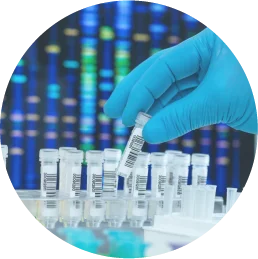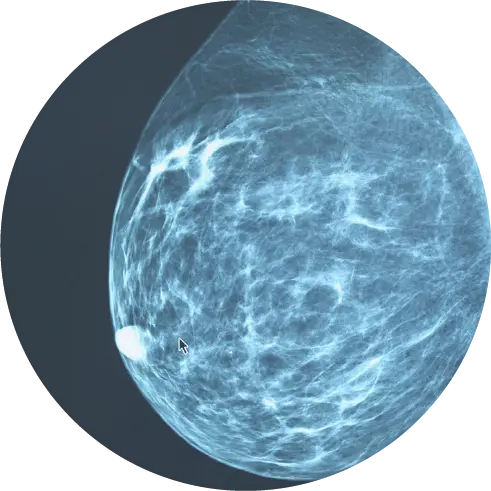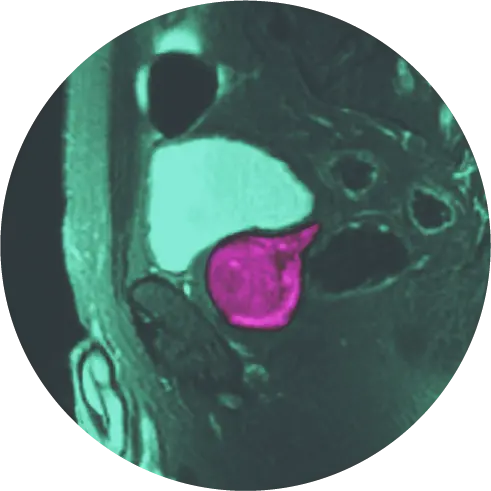About 1 in 8 men will be diagnosed with prostate cancer in his lifetime.1 This staggering statistic means that you may personally know someone who has battled this disease.
Researchers have found several factors that contribute to prostate cancer’s development: from a family history of the disease to genetic mutations inherited at birth.2
Still, there is no known cause of prostate cancer – and so, no one way to prevent it.
You might wonder, “How can I reduce my risk of developing prostate cancer?” The good news is this: There are ways to cut your risk. Let’s look at the steps you can take today.
What Steps Can I Take to Prevent Prostate Cancer?
1. Make Healthy Food Choices
Poor diet and nutrition are closely linked to many health conditions, including prostate cancer.3
From rising grocery costs and limited availability of fresh meat/produce to having little time to cook, making healthy decisions around food isn’t easy. While difficult, paying attention to the food choices you make can help improve your overall health and guard against disease.
2. Avoid Saturated Fats
Saturated fats, which are found in foods such as red meat and dairy products, can contribute to the risk of prostate cancer. Research suggests limiting your intake of animal-based products, replacing them with heart-healthy fats found in nuts, fish, and olive oil.3
3. Add Antioxidant- and Vitamin-rich Foods
If you’re looking for foods to add to your weekly menu, consider those high in antioxidants like tomatoes, watermelon, berries, grapefruit, and dark leafy greens like kale.
Vitamins D and E may also play a role in reducing your prostate cancer risk.3 You can incorporate more of these vitamins into your diet with fortified orange juice, portabella mushrooms, spinach, almonds, and asparagus.
4. Cut Your Alcohol Consumption
There is a lot of mixed health advice about alcohol.
Overall, studies suggest that heavy alcohol consumption (defined as 15 or more drinks per week for men) can increase your risk of developing prostate cancer.4
How much alcohol is too much?
It varies based on the type of alcohol. For example, one standard drink is defined as 12 ounces of beer containing 5% alcohol by volume (ABV) or 5 ounces of wine at about 12% ABV. With liquor-based drinks, one standard drink contains 1.5 ounces of liquor such as vodka at 40% ABV.
The Dietary Guidelines for Americans recommends two or fewer alcohol drinks per day for men.5 Following these guidelines may help reduce your risk of developing prostate cancer.
5. Avoid Smoking
The relationship between smoking and lung cancer is well-known, but did you know smoking might contribute to prostate cancer, too?
Tobacco and cigarette smoke contain over 4,000 chemicals – many of which have been linked to various cancers.3 Cigarettes can be highly addictive. But, it’s never too late to smoke less or quit smoking. There are many resources that can help, including smokefree.gov.
6. Get in Shape
Obesity has been linked to a higher risk of dying from prostate cancer, which is likely due to a number of associated hormonal changes.6
Begin by making exercise a habit habit: 10 minutes a day can turn into 15, and before you know it, you’re at the recommended 30 minutes per day.
You can start with a brisk walk or bike ride – or pick up a new hobby that makes physical exercise fun (think tennis, dancing, swimming, or even gardening). Physical exercise can also boost your mood and make you feel better each day.7
Let Us Help
HALO Diagnostics is here to help you take control of your prostate health. Give us a call today at (844) MENS-MRI or request a consultation online.
References
1American Cancer Society. (2022). Key statistics for prostate cancer. Retrieved from: https://www.cancer.org/cancer/prostate-cancer/about/key-statistics..html
2Gann, P.H. (2002). Risk factors for prostate cancer. Reviews in Urology, 45(5), S3-S10. Retrieved from: https://www.ncbi.nlm.nih.gov/pmc/articles/PMC1476014/
3Noor, R., et al. (2016). The risk factors of prostate cancer and its prevention: A literature review. Acta Medica Indonesiana – The Indonesian Journal of Internal Medicine. Retrieved from: http://www.inaactamedica.org/archives/2016/27840359.pdf
4Macke, A.J. & Petrosyan, A. (2022). Alcohol and prostate cancer: Time to draw conclusions. Biomolecules. Retrieved from: https://www.ncbi.nlm.nih.gov/pmc/articles/PMC8945566/
5Centers for Disease Control and Prevention. (2022). Alcohol and public health: Frequently asked questions. Retrieved from: https://www.cdc.gov/alcohol/faqs.htm
6Freedland, S.J., et al. (2004). Examining the relationship between obesity and prostate cancer. Reviews in Urology. Retrieved from https://www.ncbi.nlm.nih.gov/pmc/articles/PMC1550782/
7Memorial Sloan Kettering Cancer Center. (2022). Your guide to preventing prostate cancer. Retrieved from: https://www.mskcc.org/cancer-care/patient-education/your-guide-preventing-prostate




